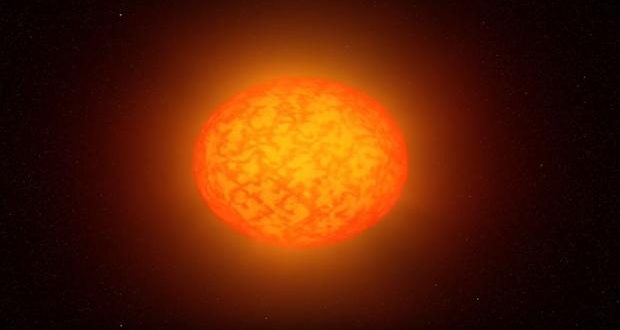Astronomers studying data from NASA’s Kepler space telescope have observed a strange set of spooky stars that look just like giant pumpkins in the sky.
The stars, which spin so fast they’ve been squashed into pumpkin-like shapes, are thought to be the result of close binary systems where two sun-like stars merge.
The 18 stars rotate in just a few days, on average, compared to the sun’s nearly one month rotation. Their rapid rotation greatly amplifies the same kind of activity we see on the sun, such as sunspots and solar flares, resulting in enhanced X-ray output.
The most extreme member of the group, a K-type orange giant dubbed KSw 71, is more than 10 times larger than the sun, rotates in just 5.5 days, and produces X-ray emission 4,000 times greater than the sun does at solar maximum.
These rare stars were found as part of an X-ray survey of the original Kepler field of view. From 2009 to 2013, Kepler measured the brightness of more than 150,000 stars in a single patch of the sky to detect the regular dimming from planets passing in front of their host stars. The mission was immensely successful and continues on as the K2 mission, studying other parts of the sky.
Because the original field has been studied so well by Kepler and other missions, it is now one of the best-known parts of the sky. Astronomers decided to observe portions of the field using the X-ray and ultraviolet/optical telescopes on Swift to find X-ray sources that Kepler may have observed in visible light. The Kepler-Swift Active Galaxies and Stars Survey (KSwAGS) found 93 sources, half of which are active galaxies, where a central black hole drives the emissions. The other half are various types of X-ray stars, including the 18 “pumpkin” stars.
Forty years ago, Ronald Webbink at the University of Illinois, Urbana-Champaign noted that close binary systems cannot survive once the fuel supply of one star dwindles and it starts to enlarge. The stars coalesce to form a single rapidly spinning star initially residing in a so-called “excretion” disk formed by gas thrown out during the merger. The disk dissipates over the next 100 million years, leaving behind a very active, rapidly spinning star.
The KSwAGS pumpkin stars are thought to have shed their disks recently, which means Kepler and Swift have caught them at the end of a very brief evolutionary phase.
Agencies/Canadajournal

 Canada Journal – News of the World Articles and videos to bring you the biggest Canadian news stories from across the country every day
Canada Journal – News of the World Articles and videos to bring you the biggest Canadian news stories from across the country every day

